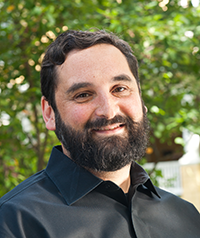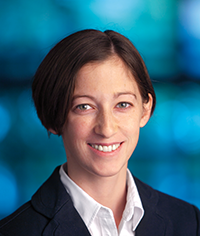| Wednesday, December 7 | |
| 08:30 - 09:30 | |
| Plenary: PLEN-1: Ben Vigoda - Deep Bayesian Program Learning | |
| 14:00 - 15:40 | |
| GS-P1: General Symposium Poster: Source Separation and Deconvolution | |
| 16:10 - 17:30 | |
| GS-1: General Symposium: Optical and Visible Light Communications | |
| Thursday, December 8 | |
| 08:30 - 09:30 | |
| Plenary: PLEN-2: Danielle S. Bassett — Network Dynamics and Control in the Human Brain | |
| 14:00 - 15:40 | |
| GS-P2: General Symposium Poster: Signal Decomposition | |
| 16:10 - 17:30 | |
| GS-P3: General Symposium Poster: Detection and Tracking | |
| Friday, December 9 | |
| 08:30 - 09:30 | |
| Plenary: PLEN-3: Stéphane Mallat — High Dimensional Learning with Deep Neural Networks | |
| 11:00 - 12:20 | |
| GS-2: General Symposium: Statistical Signal Processing and Estimation | |
| 14:00 - 15:40 | |
| GS-3: General Symposium: Speech Processing | |
| 16:10 - 17:30 | |
| GS-P4: General Symposium Poster: Signal Processing for Communications | |

Before founding Gamalon Machine Intelligence, Ben Vigoda was technical co-founder and CEO of Lyric Semiconductor, a startup that created the first integrated circuits and processor architectures for statistical machine learning and signal processing. The company was named one of the 50 Most Innovative Companies by Technology Review and was featured in the Wall Street Journal, New York Times, EE Times, Scientific American, Wired, and other media. Lyric was successfully acquired by Analog Devices, and Lyric's products and technology are being deployed in leading smart phones and consumer electronics, medical devices, wireless base stations, and automobiles.
Ben completed his PhD at MIT developing circuits for implementing machine learning algorithms natively in hardware. He has won entrepreneurship competitions at MIT and Harvard, fellowships from Intel and the Kavli Foundation/National Academy of Sciences, and has held research appointments at MIT, HP, Mitsubishi, and the Santa Fe Institute. He has authored over 120 patents and academic publications. He currently serves on the DARPA Information Science and Technology (ISAT) steering committee.
Ben also co-founded Design That Matters, a not-for-profit that for the past decade has helped solve engineering and design problems in under-served communities and has saved thousands of infant lives by developing low-cost, easy-to-use medical technology such as infant incubators, UV therapy, pulse oximeters, and IV drip systems that have been fielded in 20 countries.

Danielle S. Bassett is an Associate Professor in the Department of Bioengineering at the University of Pennsylvania. She is most well-known for her work blending neural and systems engineering to identify fundamental mechanisms of cognition and disease in human brain networks. She received a B.S. in physics from the Pennsylvania State University and a Ph.D. in physics from the University of Cambridge, UK. Following a postdoctoral position at UC Santa Barbara, she was a Junior Research Fellow at the Sage Center for the Study of the Mind. In 2012, she was named American Psychological Association's `Rising Star' and given an Alumni Achievement Award from the Schreyer Honors College at Pennsylvania State University for extraordinary achievement under the age of 35. In 2014, she was named an Alfred P Sloan Research Fellow and received the MacArthur Fellow Genius Grant. In 2015, she received the IEEE EMBS Early Academic Achievement Award, and was named an ONR Young Investigator. In 2016, she received an NSF CAREER award and was named one of Popular Science’s Brilliant 10. She is the founding director of the Penn Network Visualization Program, a combined undergraduate art internship and K-12 outreach program bridging network science and the visual arts. Her work has been supported by the National Science Foundation, the National Institutes of Health, the Army Research Office, the Army Research Laboratory, the Alfred P Sloan Foundation, the John D and Catherine T MacArthur Foundation, and the Office of Naval Research. She lives with her husband and two sons in Wallingford, Pennsylvania.

Deep convolutional networks have obtained spectacular results for image understanding, audio and medical signal analysis, natural languages. We review their architecture, and analyze their mathematical properties, with many open questions. These architectures seem to linearize important non-linear transformations, while reducing dimensionality with appropriate invariants. They are computed with non-linear contractions, and multiscale linear operators, where wavelets play an important role. Applications are shown for image and audio classification as well as regressions of quantum molecular energies.
Stéphane G. Mallat made some fundamental contributions to the development of wavelet theory in the late 1980s and early 1990s. He has also done work in applied mathematics, signal processing, music synthesis, and image segmentation.
Specifically, he collaborated with Yves Meyer to develop the Multiresolution Analysis (MRA) construction for compactly supported wavelets, which made the implementation of wavelets practical for engineering applications by demonstrating the equivalence of wavelet bases and conjugate mirror filters used in discrete, multirate filter banks insignal processing. He also developed (with Sifen Zhong) the Wavelet transform modulus maxima method for image characterization, a method that uses the local maxima of the wavelet coefficients at various scales to reconstruct images. He introduced the scattering transform that constructs invariance for object recognition purposes. Mallat is the author of A Wavelet Tour of Signal Processing (ISBN 012466606X), a common text in some applied mathematics and engineering courses.
He has taught at New York University, Massachusetts Institute of Technology, Tel Aviv University, École polytechnique and at the Ecole normale supérieure.
[Download the PDF Call for Papers]
The IEEE Global Conference on Signal and Information Processing (GlobalSIP) is a flagship conference of the IEEE Signal Processing Society. GlobalSIP2016 will be held in Washington, DC, USA, December 7-9, 2016. The General Symposium 2016 will focus broadly on signal and information processing with an emphasis on emerging themes.
Submissions are welcome on topics including:
There are two paper categories for the General Symposium:
Submission of Regular Papers: Prospective authors are invited to submit full-length papers, with up to four pages for technical content including figures and possibly with references, and one optional additional 5th page containing only references. Manuscripts should be original (not submitted/published anywhere else) and written in accordance with the standard IEEE double-column paper template. All paper submissions will be through the CMS system (http://www.ieeeglobalsip.org/). A selection of best papers and best student papers will be made by the GlobalSIP 2016 best paper award committee upon recommendations from the symposia Technical Committees.
Signal Processing Letters: Authors of SPL will be given the opportunity to present their work at GlobalSIP 2016, subject to space availability and approval by the GlobalSIP 2016 Technical Program Chairs. SPL papers published between January 1, 2015 and April 30, 2016 are eligible for presentation at GlobalSIP 2016. Because they are already peer-reviewed and published, SPL papers presented at GlobalSIP 2016 will neither be reviewed nor included in the proceedings. Requests for presentation of SPL papers should be made through the CMS system http://www.ieeeglobalsip.org/) under the General Symposium of GlobalSIP 2016 on or before June 5, 2016. Approved requests for presentation must have one author register for the conference according to the GlobalSIP 2016 registration instructions.
Prospective authors are invited to submit full-length papers, with up to four pages for technical content including figures and possible references, and with one additional optional 5th page containing only references. Manuscripts should be original (not submitted/published anywhere else) and written in accordance with the standard IEEE double-column paper template. Submission is through the GlobalSIP website at http://2016.ieeeglobalsip.org/Papers.asp.
| Paper Submission Deadline | |
| Review Results Announced | |
| Camera-Ready Papers Due | September 30, 2016 |


